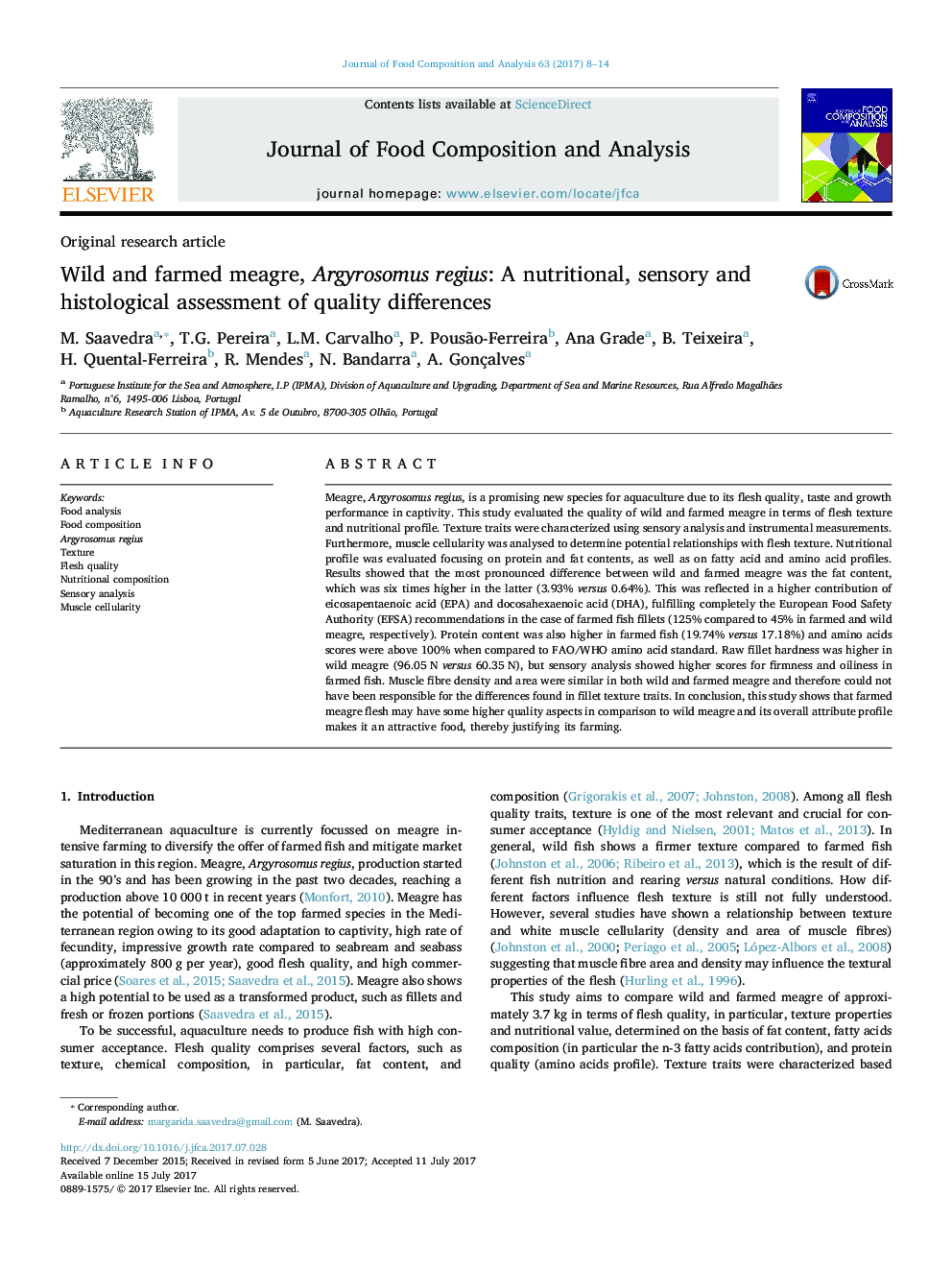| کد مقاله | کد نشریه | سال انتشار | مقاله انگلیسی | نسخه تمام متن |
|---|---|---|---|---|
| 5136809 | 1494479 | 2017 | 7 صفحه PDF | دانلود رایگان |

- Farmed meagre had a fat content six times higher than wild meagre.
- Wild meagre had a higher fillet hardness (raw) but lower firmness (cooked).
- Farmed meagre EPA+DHA contribution fulfilled EFSA recommendations.
- Fatty acid profile of wild meagre were more balanced.
- Muscle fibre area and density were similar in both wild and farmed meagre.
Meagre, Argyrosomus regius, is a promising new species for aquaculture due to its flesh quality, taste and growth performance in captivity. This study evaluated the quality of wild and farmed meagre in terms of flesh texture and nutritional profile. Texture traits were characterized using sensory analysis and instrumental measurements. Furthermore, muscle cellularity was analysed to determine potential relationships with flesh texture. Nutritional profile was evaluated focusing on protein and fat contents, as well as on fatty acid and amino acid profiles. Results showed that the most pronounced difference between wild and farmed meagre was the fat content, which was six times higher in the latter (3.93% versus 0.64%). This was reflected in a higher contribution of eicosapentaenoic acid (EPA) and docosahexaenoic acid (DHA), fulfilling completely the European Food Safety Authority (EFSA) recommendations in the case of farmed fish fillets (125% compared to 45% in farmed and wild meagre, respectively). Protein content was also higher in farmed fish (19.74% versus 17.18%) and amino acids scores were above 100% when compared to FAO/WHO amino acid standard. Raw fillet hardness was higher in wild meagre (96.05Â N versus 60.35Â N), but sensory analysis showed higher scores for firmness and oiliness in farmed fish. Muscle fibre density and area were similar in both wild and farmed meagre and therefore could not have been responsible for the differences found in fillet texture traits. In conclusion, this study shows that farmed meagre flesh may have some higher quality aspects in comparison to wild meagre and its overall attribute profile makes it an attractive food, thereby justifying its farming.
Journal: Journal of Food Composition and Analysis - Volume 63, October 2017, Pages 8-14